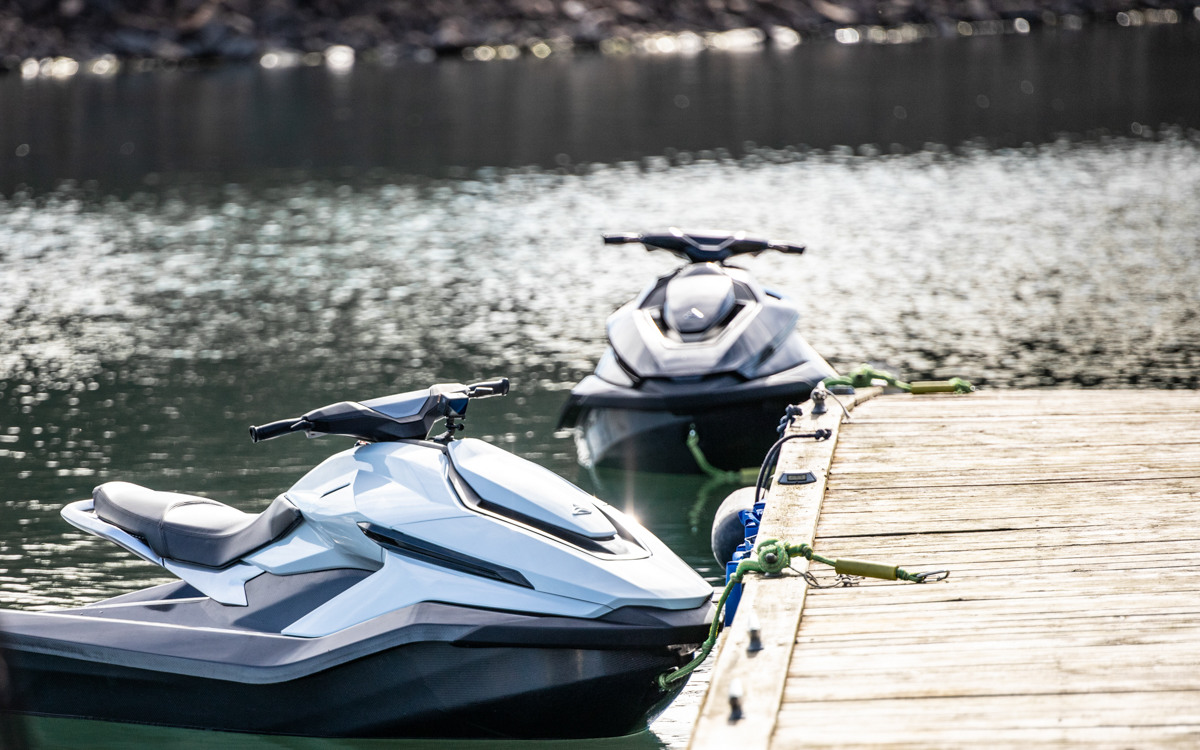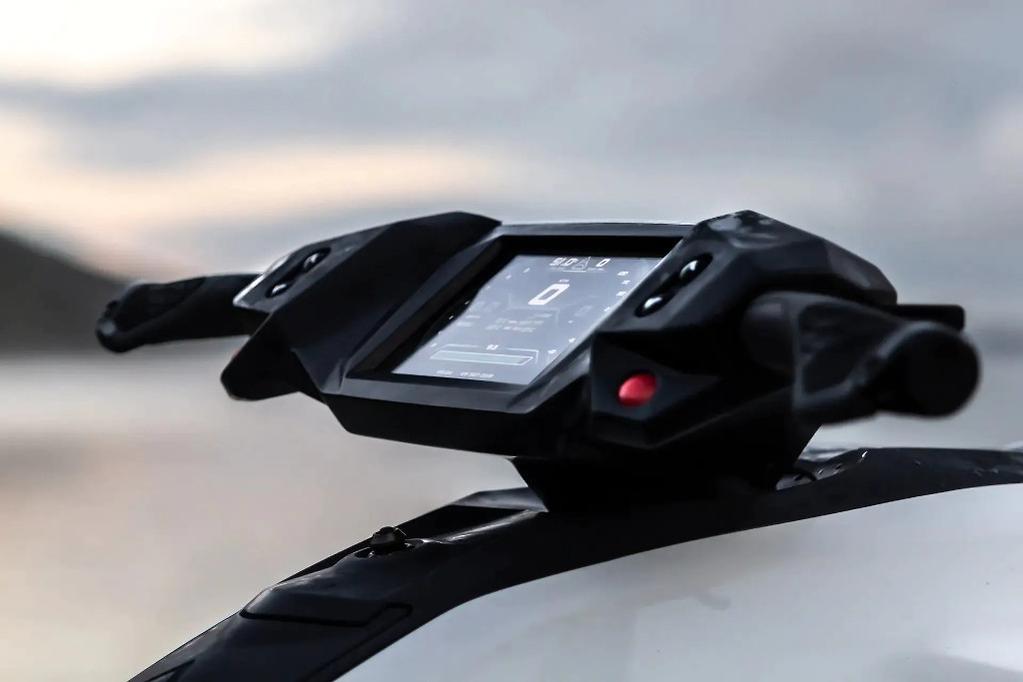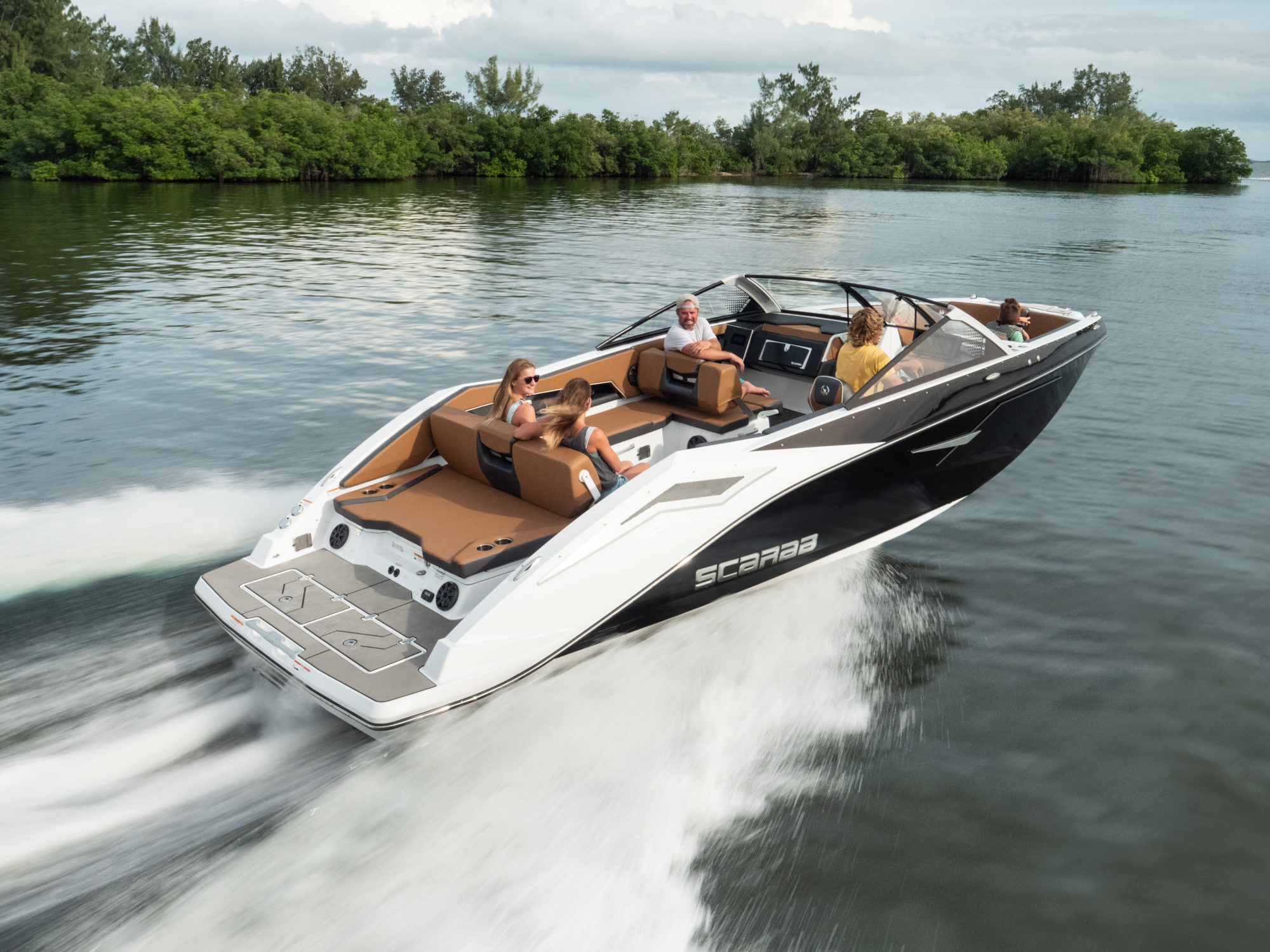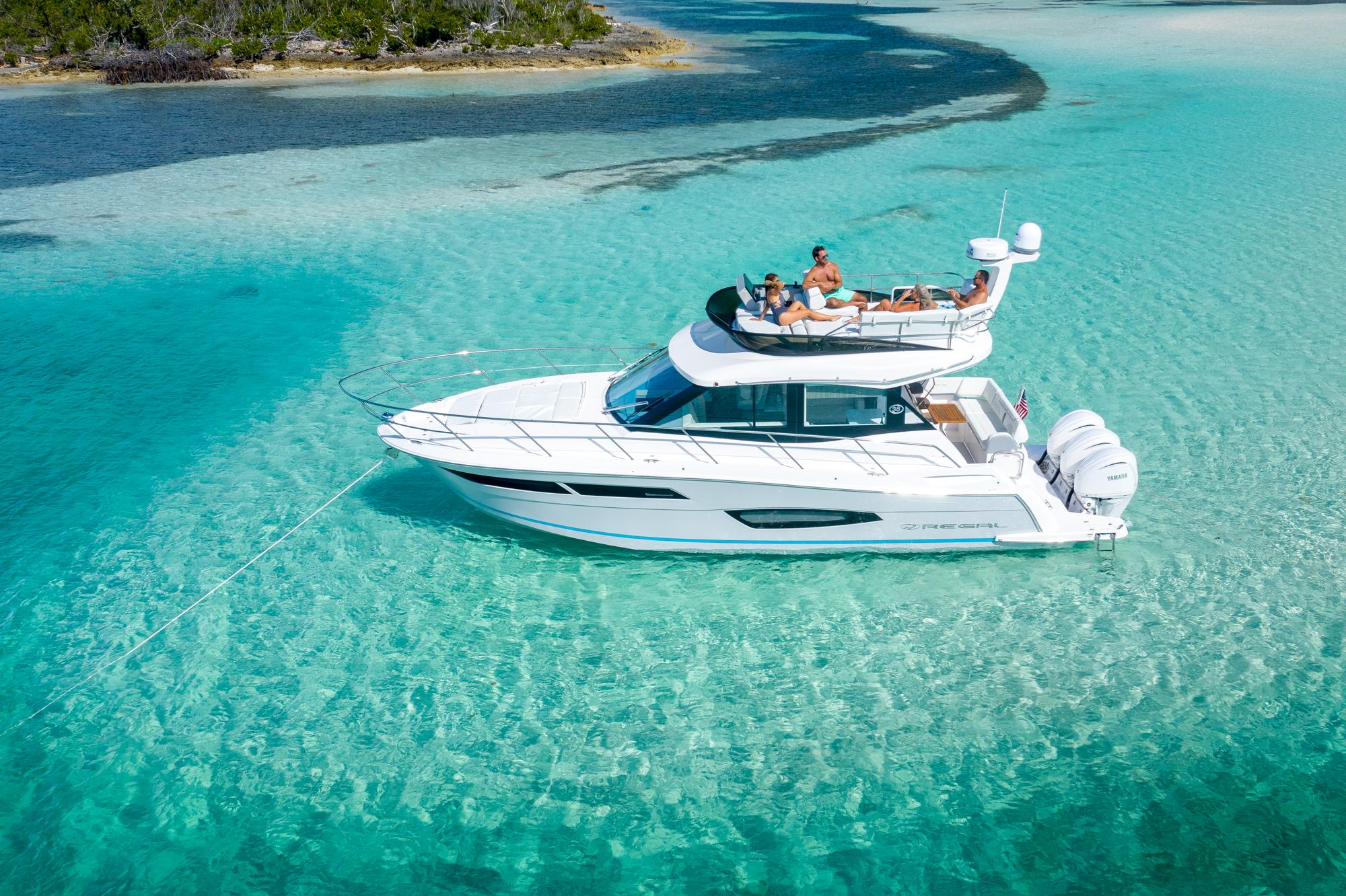Electric Jet Ski Revolution: Changing the Watersports Landscape
Electric jet skis are revolutionizing the personal watercraft industry by offering a more environmentally-friendly and quieter option compared to their gas-powered counterparts. One notable electric jet ski on the market is the Taiga Orca, which proves that these innovative watercraft can provide an exhilarating ride experience without causing noise or air pollution.
As the demand for sustainable and eco-conscious recreational products grows, the development of electric jet skis is a significant step in reducing the environmental impact of watersports. These emission-free watercraft benefit not only the environment but also the user, as they provide a smooth and virtually silent experience, making them perfect for sensitive areas where noise disturbance is a concern. With advancements in battery technology and electric motor efficiency, electric jet skis are paving the way for the future of personal watercraft.

Advantages of Electric Jet Skis
One of the primary benefits of electric jet skis is their lower emissions compared to gas-powered counterparts. This leads to a more environmentally-friendly watercraft option, as they contribute to reduced air and water pollution. They also align with the ongoing global efforts to move towards sustainable and eco-friendly technologies in various industries.(source)
Another advantage is the reduced noise produced by electric jet skis. They create significantly less noise pollution compared to traditional gas-powered models, providing a more enjoyable and peaceful experience for both riders and those nearby (source).
Electric jet skis are often considered less dangerous, as they come with fewer moving parts. This not only reduces the risk of malfunction and accidents but also makes them easier to maintain and service(source).
Finally, being a trendy and interesting option, electric jet skis can be more attractive to consumers seeking innovative technology and new experiences on the water. As demand for sustainable and eco-friendly transportation grows, electric jet skis provide a forward-thinking alternative to conventional watercraft(source).

How Electric Jet Skis Work
Electric jet skis, like the Taiga Orca, operate by replacing the traditional gasoline-powered engines with electric motors. These motors are powered by rechargeable batteries, which provide a clean and quiet alternative to their combustion counterparts.
The basic principle of an electric jet ski remains the same as traditional models: they use a jet pump system to propel the rider across the water. The water is drawn in through an intake at the bottom of the jet ski, and then forced out through a jet nozzle at the rear. The electric motor drives an impeller inside the jet pump, which creates the necessary propulsion.
One of the advantages of electric jet skis is their instant torque. Unlike gasoline engines, electric motors deliver their peak torque immediately, which can provide quick acceleration and agile handling on the water. Additionally, electric jet skis require less maintenance and produce zero emissions, making them a more eco-friendly option for recreational watercraft.
Electric jet skis, such as the Taiga Orca, typically feature advanced energy management systems to optimize battery life and ensure a safe and efficient operation. These systems continually monitor the battery's temperature, voltage, and other parameters to prevent any potential issues and maximize performance.

Top Electric Jet Ski Models
As electric jet skis gain popularity, several companies have introduced advanced models that offer impressive features, performance, and sustainability. In this section, we will be discussing some of the top electric jet ski models available in the market.
1. Taiga Motor's ORCA is a high-performance electric personal watercraft designed for speed and agility. With a top speed of 65 mph and a range of about 2 hours on a single charge, the ORCA ensures thrilling water adventures without the noise and pollution of a traditional jet ski.
2. The Narke GT95 Electrojet is an exciting electric jet ski model featuring sleek design and impressive performance. With a top speed of 47 mph and a range of up to 31 miles, it's perfect for exploring the waters while reducing your environmental impact.
3. T3MP3ST Maverick GT is a futuristic electric jet ski that combines the excitement of a traditional jet ski with the environmental benefits of electric power. The Maverick GT boasts a top speed of around 50 mph and offers multiple riding modes for different skill levels.
4. The Electric SeaDoo is a prototype electric jet ski from one of the leading personal watercraft brands, SeaDoo. It's anticipated to provide eco-friendly water sports enthusiasts with a high-performance, emission-free alternative to traditional jet skis.
These electric jet ski models showcase the advancements in the world of personal watercraft, offering sustainable and thrilling options for water sports enthusiasts.

Battery and Charging
The Taiga Orca electric jet ski features a 23 kWh battery with 355V nominal voltage and a weight of approximately 125kg. The battery has a low quiescent drain, allowing it to be left unplugged for up to 5 years without causing significant damage or depletion of the battery(source).
When it comes to charging, the Orca's battery can be charged using standard or level 2 (240V) outlets, with faster results achieved by using a DC fast charger. With a DC fast charger, the battery can be charged from 0 to 80% in just 20 minutes(source).
Charging options provide convenience and flexibility for various situations. For example, if an electric jet ski is used mostly around a lake house, a standard outlet or level 2 charger can suffice; if the jet ski is used in a variety of locations, opting for a compatible fast charger may be more beneficial.
It's essential to consider the charging infrastructure at the intended jet ski usage locations, as having convenient and fast charging options will increase the overall enjoyment and usability of the electric jet ski.
Taiga Motors recommends coordinating with local regulatory and permitting requirements to ensure proper and safe installation of charging infrastructure(source).

Environmental Impact
Electric jet skis significantly reduce the environmental impact when compared to their gas-powered counterparts. Traditional gas-powered jet skis produce noise, air, and water pollution, which can have negative effects on marine life and water quality. In contrast, electric jet skis produce much less noise and virtually no emissions, making them a more eco-friendly choice for water sports enthusiasts.
One of the main benefits of electric jet skis is their lack of emissions. Gas-powered jet skis can release harmful pollutants into the air and water, which contributes to water pollution and can harm marine life. In contrast, electric jet skis have a lower environmental impact due to the absence of exhaust fumes.
In addition to reduced emissions, electric jet skis also produce less noise pollution. Gas-powered jet skis can generate considerable noise levels, which can disturb marine life and other water users. On the other hand, electric jet skis operate much more quietly, ensuring a less intrusive experience for both humans and animals.
Moreover, electric jet ski technology is continuously evolving and improving. With advancements in battery technology and charging capabilities, electric jet skis are becoming increasingly more efficient and sustainable. As a result, adopting electric jet skis can help promote water sports practices that are more in harmony with the environment.
Overall, opting for an electric jet ski means choosing a more eco-friendly option that minimizes the impact on the environment while still providing an enjoyable experience on the water.

Maintenance and Cost Comparison
When comparing electric jet skis to their traditional gas-powered counterparts, there are some notable differences in maintenance and cost. One of the main advantages of electric jet skis is the reduced maintenance requirements since there is no internal combustion engine.
Gas-powered jet skis require regular oil changes, spark plug replacements, and exhaust system maintenance, while electric jet skis have fewer moving parts, resulting in lower maintenance costs. Moreover, battery-powered watercraft have no need for fuel, which reduces the cost of ownership significantly.
Let's dive into some numbers for a clearer comparison. A 180 HP gas-powered jet ski has an average fuel consumption of 5 gallons per hour, with associated gasoline and maintenance costs over the first five years of ownership (JetDrift). In contrast, an electric jet ski can cost as little as $3 per week or $12 per month for electricity, bringing the total cost of operating it to around $60 per riding season. Over a five-year period, that adds up to just $300 in electricity costs (Steven in Sales).
Although the initial purchase price of electric jet skis can be higher, the savings in maintenance and operating costs justify the investment for many environmentally conscious riders. One example of a popular electric jet ski on the market is the Taiga Orca, which offers an emission-free, engaging, and enjoyable riding experience.
Safety Tips
Electric jet skis, like their traditional counterparts, require cautious operation and maintenance to ensure safety while out on the water. In this section, we'll discuss some safety tips specific to electric jet skis to help you have a fun and secure experience.
First and foremost, it's essential to inspect your electric jet ski's high voltage system and wiring regularly. This includes monitoring resistance levels to safeguard against high voltage line risks, as mentioned in a REV Electric Jet Ski safety report. Regular inspection and maintenance will help prevent potential hazards.
Just like with traditional jet skis, it's crucial to wear a Coast Guard-approved life jacket when riding an electric jet ski. Wearing protective gear such as wetsuits, gloves, and helmets can also provide extra security and comfort during your ride.
Another essential tip is to practice riding in a controlled environment before venturing into open water. Familiarize yourself with the handling, acceleration, and braking of your electric jet ski to gain confidence in your abilities and understand its limitations.
While it may be tempting to ride at top speeds, always maintain a safe and reasonable velocity for the conditions. Be aware of your surroundings, including other watercraft, swimmers, wildlife, and any obstacles. Maintaining a safe distance from other water users and practicing defensive riding can prevent accidents and keep everyone safe.
Lastly, remember to follow all local boating and watercraft regulations, as these laws are in place to ensure your safety and the well-being of others. Stay informed and up-to-date with any changes in regulations applicable to electric jet skis in your area.
SeaMag's Thoughts
Electric jet skis have come a long way and are starting to gain popularity within the personal watercraft market. With numerous advantages such as environmental benefits, lower noise levels, and reduced maintenance, they represent a promising alternative to traditional gas-powered jet skis. However, some challenges still remain, including limited range and higher initial cost.
As JetDrift highlighted in their comparison, electric and gas-powered jet skis each have their own distinct advantages and disadvantages. It's essential to carefully consider your personal preferences and requirements before adopting any technology.
With electric personal watercraft like the Taiga Motors Orca making waves, the future looks bright for electric jet skis. As more options become available on the market, and improvements continue to be made in battery technology, electric jet skis are likely to become an increasingly attractive choice for enthusiasts.
SeaMag's Experience
We have a diverse team of boaters, ship captains, divers,marina owners, to name a few...our DNA is everything boating, fishing & water. That said, we always ask "who has experience with this" & 99% of the time we have someone that has some gems to share.
Charlie here, and I want to tell you about a significant moment in my life - the first time I tested the latest models of electric jet skis.
As a passionate enthusiast of electric vehicles and a veteran test rider, I was excited to try out the revolutionary electric powertrain platform of the electric sea doo. The Canadian Company that produced this all electric jet ski was proudly marking a new era in electric watercraft, and I was eager to be a part of it.
During the Test Ride, I was impressed with the three modes - Range mode, Access mode, and Save mode - that gave me complete control over the electric PWC's performance. The sounds of the electric motor were music to my ears, and the carbon footprint left behind was minimal, making me feel like I was part of a movement that is helping to save the planet.
The company had its own network of fast Chargers, making it convenient to recharge the electric watercraft whenever and wherever I needed it. And with Arca deliveries and pre-order options available, it was clear that this Canadian Company was committed to making electric vehicles accessible to everyone.
I told Sam Bruno, a fellow electric vehicle enthusiast, about my experience, and he was just as excited as I was. We both agreed that electric vehicles were the way of the future, and we couldn't wait to see what other electric cars, scooters, and even Yamaha would come out with.
As I watched the electric sea doo speed across the water like a wild machine, I knew that this was the beginning of a new era in water sports. And I couldn't wait to spend my summer testing more electric watercraft in Canada and around the world.
Stay tuned for more details on my electric vehicle adventures, and remember - the future is electric!
Meet Charlie Hardcastle, the undisputed king of the sea, and Editor-in-chief of Sea Magazine. Charlie's passion for boating runs deeper than a kraken's lair, and his years of experience on the water make him the ultimate boating guru. When it comes to boats, Charlie's knowledge is as vast as the ocean. He knows everything from the latest technology to the best locations for water enthusiasts. But Charlie's expertise isn't just limited to boating mechanics and history. He's also a marketing whiz, with a keen understanding of how the industry is adapting to changing consumer preferences. He knows how to effectively reach new audiences, whether they're looking for a luxury yacht or a modest pontoon boat. In short, Charlie is the complete package, a one-stop-shop for all things boating. So if you're looking to learn about the latest technology, marketing strategies, or just want to hear some epic sea tales, Charlie Hardcastle is your guy.






